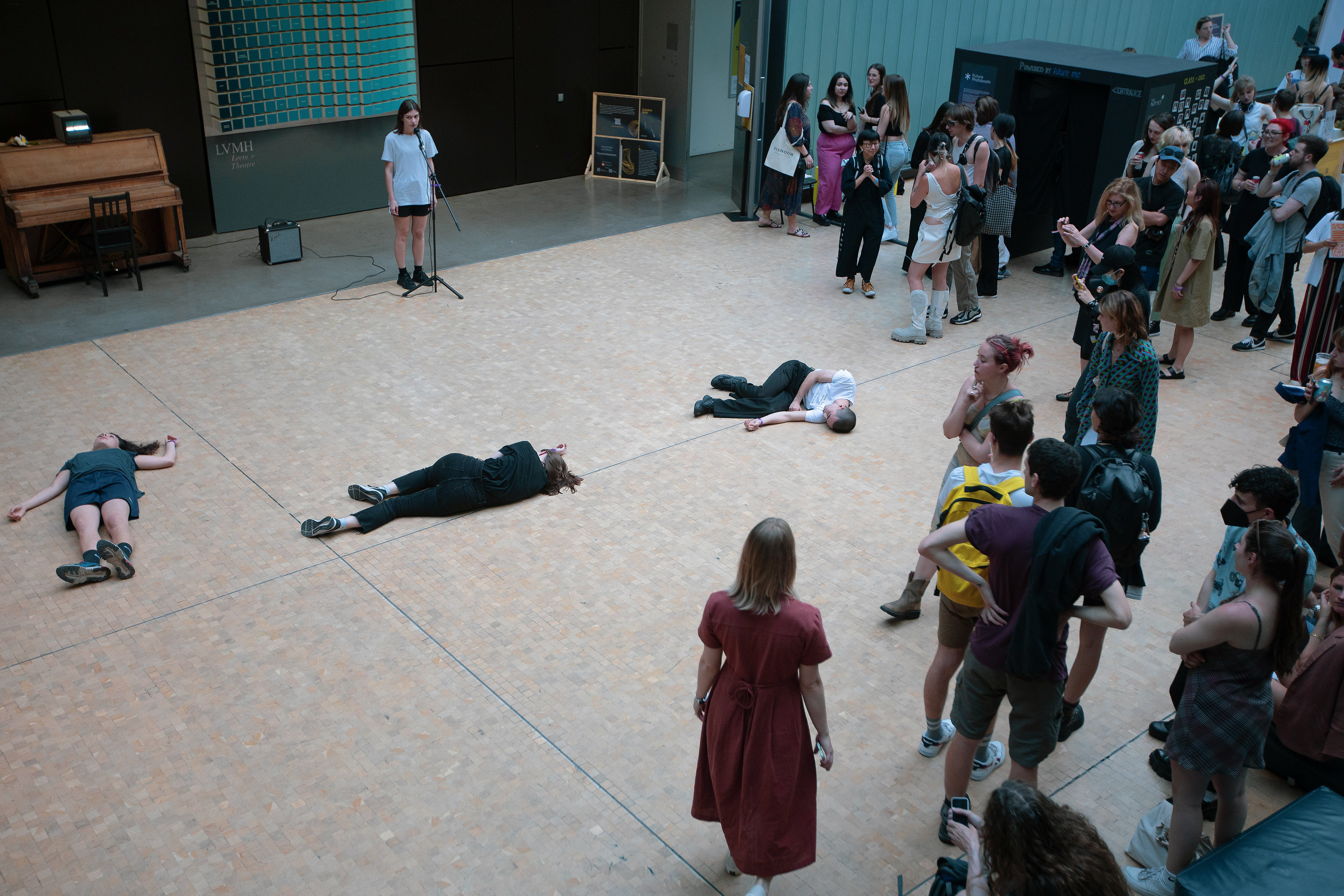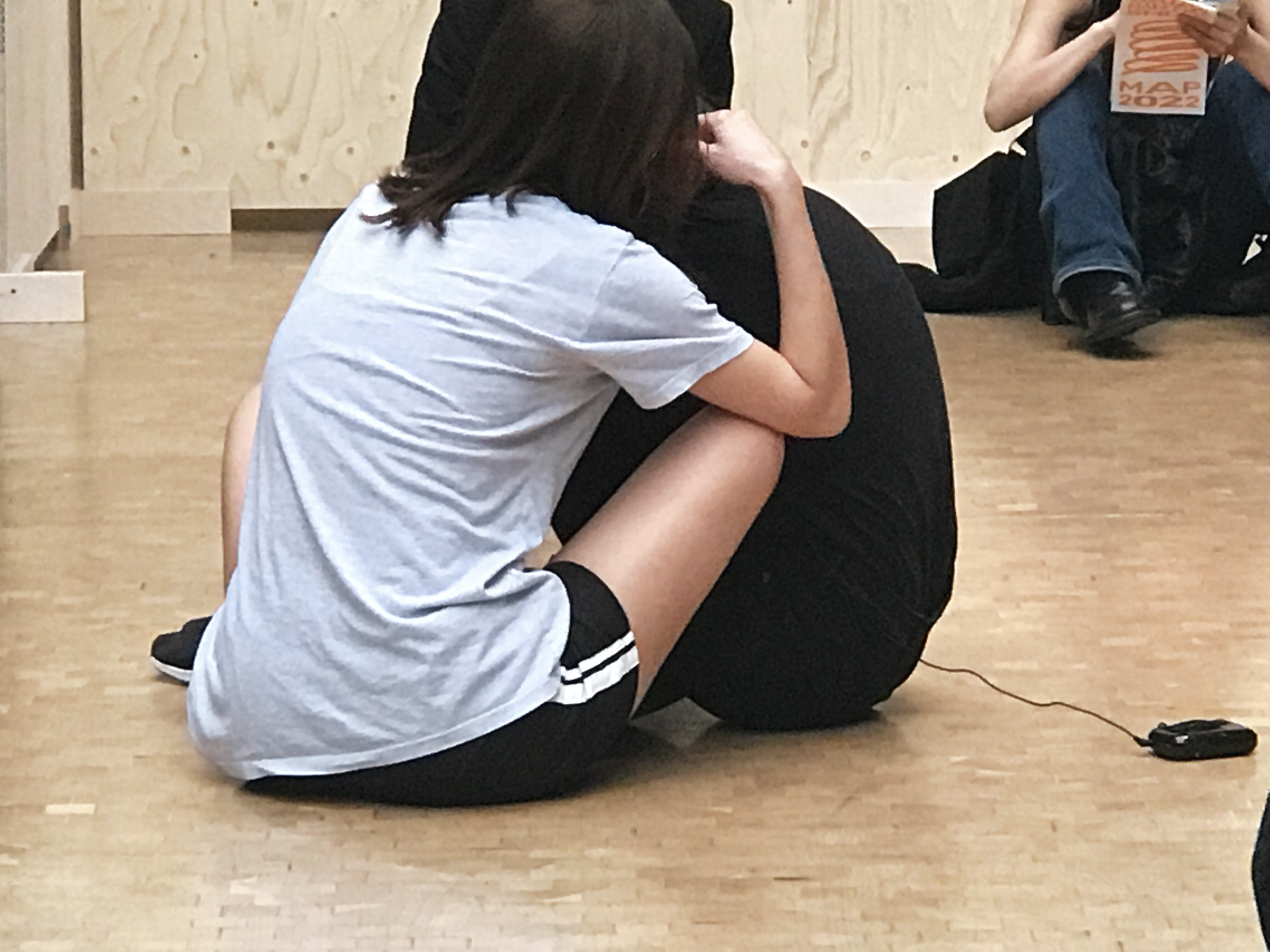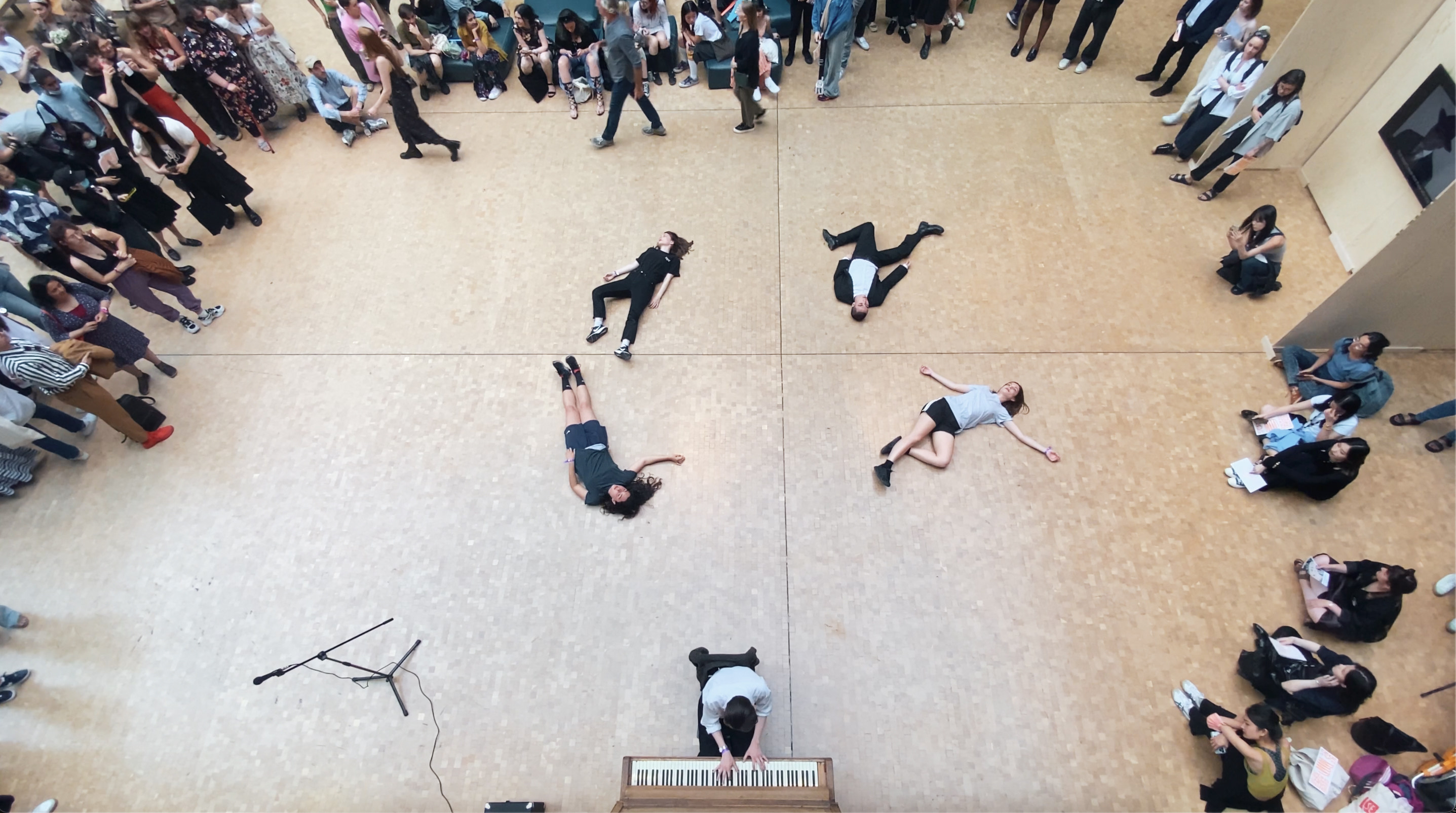




ANTIGONE AGAIN, 2022
performance, 25 min.
with: Gaïa Debuchy, Konstantina Tsagianni, Evangelia Danadaki, Christopher Faulkner, Ben Finlay, Ken Nakajima
Antigone is played by six players (performers and musicians). No one plays the role of Antigone. Antigone stands for anti-drasi, a form of reaction to the dynamics of power relations and identity forces towards a paradigm of inter-subjectivity. The performers appear to play as to constitute a public body-space exercising freedom, individually-and-collectively while confirming possibilities of reformations: simple actions become art and art becomes an embodiment of democracy. Antigone stands for anti-thesis, the moment the common logic is gone, when performers and spectators escape the social reality by entering a somewhere else: a zone of polyphony and desire. The artists appear in a state of plurality and transform the space into a reality where the rhythm of being-in-the-world differentiates: a time to slow down and run.
documentation: https://vimeo.com/715040366
exercise of free action, 2022
performance, 20 min.
A collaboration with Konstantina Tsagianni
A co-designed live action that affirms collective identity while testing the relational and experimental dimensions of artworking as friendship and as free play. The two friends-performers, dressed in identical attire, follow a non-linear warm-up thats leads to a four-hand impovisation as a practice of difference, where movements and sounds awaken the space and the bodies.
performance, 25 min.
with: Gaïa Debuchy, Konstantina Tsagianni, Evangelia Danadaki, Christopher Faulkner, Ben Finlay, Ken Nakajima
Antigone is played by six players (performers and musicians). No one plays the role of Antigone. Antigone stands for anti-drasi, a form of reaction to the dynamics of power relations and identity forces towards a paradigm of inter-subjectivity. The performers appear to play as to constitute a public body-space exercising freedom, individually-and-collectively while confirming possibilities of reformations: simple actions become art and art becomes an embodiment of democracy. Antigone stands for anti-thesis, the moment the common logic is gone, when performers and spectators escape the social reality by entering a somewhere else: a zone of polyphony and desire. The artists appear in a state of plurality and transform the space into a reality where the rhythm of being-in-the-world differentiates: a time to slow down and run.
documentation: https://vimeo.com/715040366
exercise of free action, 2022
performance, 20 min.
A collaboration with Konstantina Tsagianni
A co-designed live action that affirms collective identity while testing the relational and experimental dimensions of artworking as friendship and as free play. The two friends-performers, dressed in identical attire, follow a non-linear warm-up thats leads to a four-hand impovisation as a practice of difference, where movements and sounds awaken the space and the bodies.

Sleeping Beauty, 2021
performance, puppet theatre, wooden frame, fabric, transparent plastic screen, 100x150x150cm
performing: Gaïa Debuchy and Evangelia Danadaki
A durational public performance unfolding as a sculptural choreography that stages feminine performativity as resistance to the every day objectification of the female body.
video: https://vimeo.com/676072503
performance, puppet theatre, wooden frame, fabric, transparent plastic screen, 100x150x150cm
performing: Gaïa Debuchy and Evangelia Danadaki
A durational public performance unfolding as a sculptural choreography that stages feminine performativity as resistance to the every day objectification of the female body.
video: https://vimeo.com/676072503